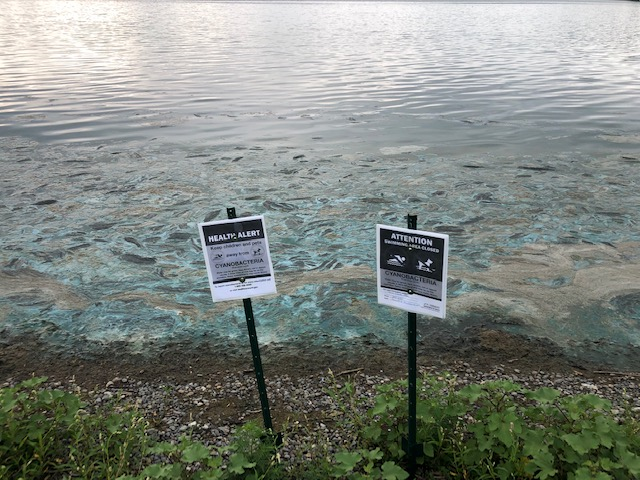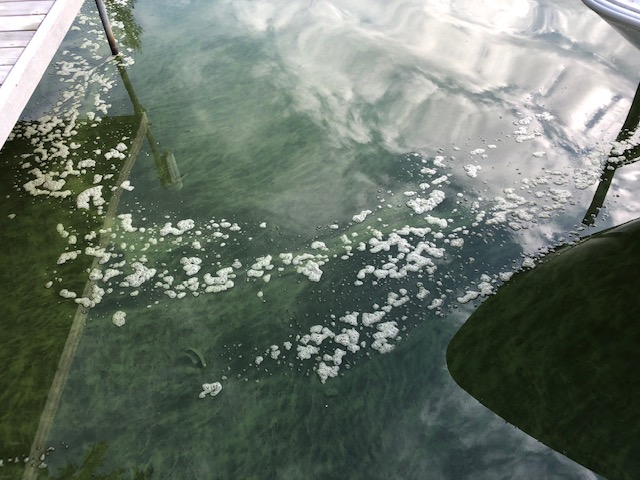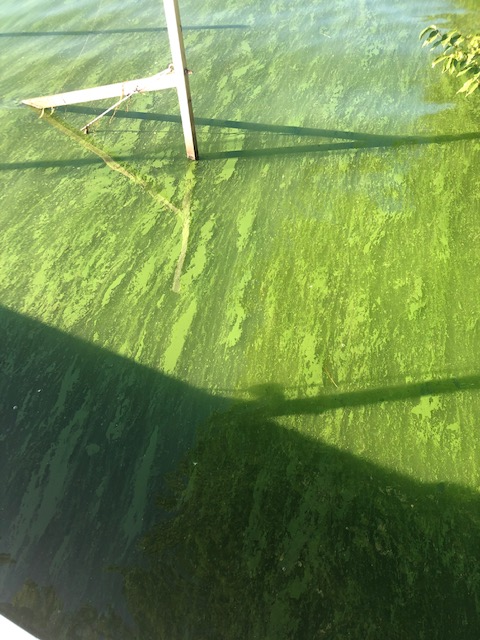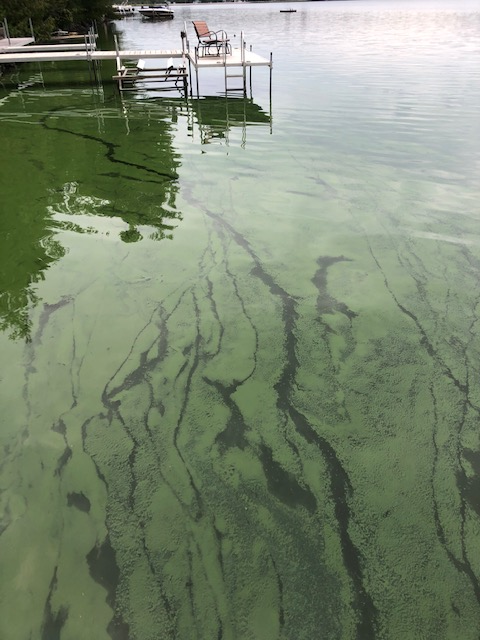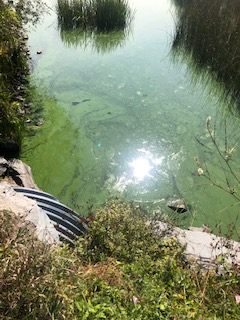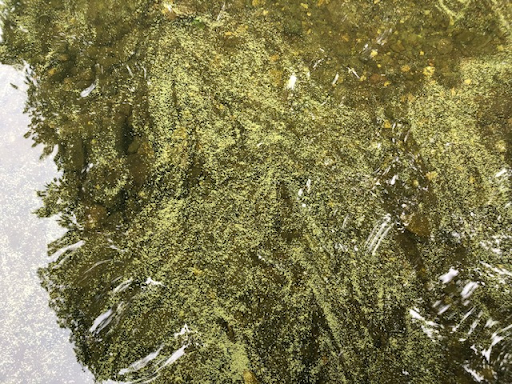What is a Cyanobacteria Bloom?
Cyanobacteria are photosynthetic organisms that are normal to find in a body of water. When at a normal level, they oxygenate the water through photosynthesis. Cyanobacteria blooms, also known as blue-green algae, are when they multiply very quickly due to excess nutrients in the water. Some cyanobacteria blooms can create harmful toxins that are a danger to you and your pets! Ensuring we have a full report of all blooms that occur in Lake Carmi is critical to not only our clean water work, but also keeping our community safe. If you spot a cyanobacteria bloom, whether you are a full time resident or just visiting Lake Carmi, there are actions you can take to help!
Cyanobacteria are photosynthetic organisms that are normal to find in a body of water. When at a normal level, they oxygenate the water through photosynthesis. Cyanobacteria blooms, also known as blue-green algae, are when they multiply very quickly due to excess nutrients in the water. Some cyanobacteria blooms can create harmful toxins that are a danger to you and your pets! Ensuring we have a full report of all blooms that occur in Lake Carmi is critical to not only our clean water work, but also keeping our community safe. If you spot a cyanobacteria bloom, whether you are a full time resident or just visiting Lake Carmi, there are actions you can take to help!
Cyanobacteria Tracking
It is our goal to have a volunteer to track cyanobacteria blooms on every shoreline.
There are two actions you can take if you suspect you see a cyanobacteria bloom:
It is our goal to have a volunteer to track cyanobacteria blooms on every shoreline.
There are two actions you can take if you suspect you see a cyanobacteria bloom:
- Visit https://www.healthvermont.gov/tracking/cyanobacteria-tracker for more information regarding how to identify cyanobacteria and report it.
- Contact the FWC Watershed Coordinator to inform them. We ask you include three clear photos of the bloom along with the location it was spotted. This will allow us to file a report.
- Submit a report yourself! The Lake Champlain Committee has an online forum for cyanobacteria reports

